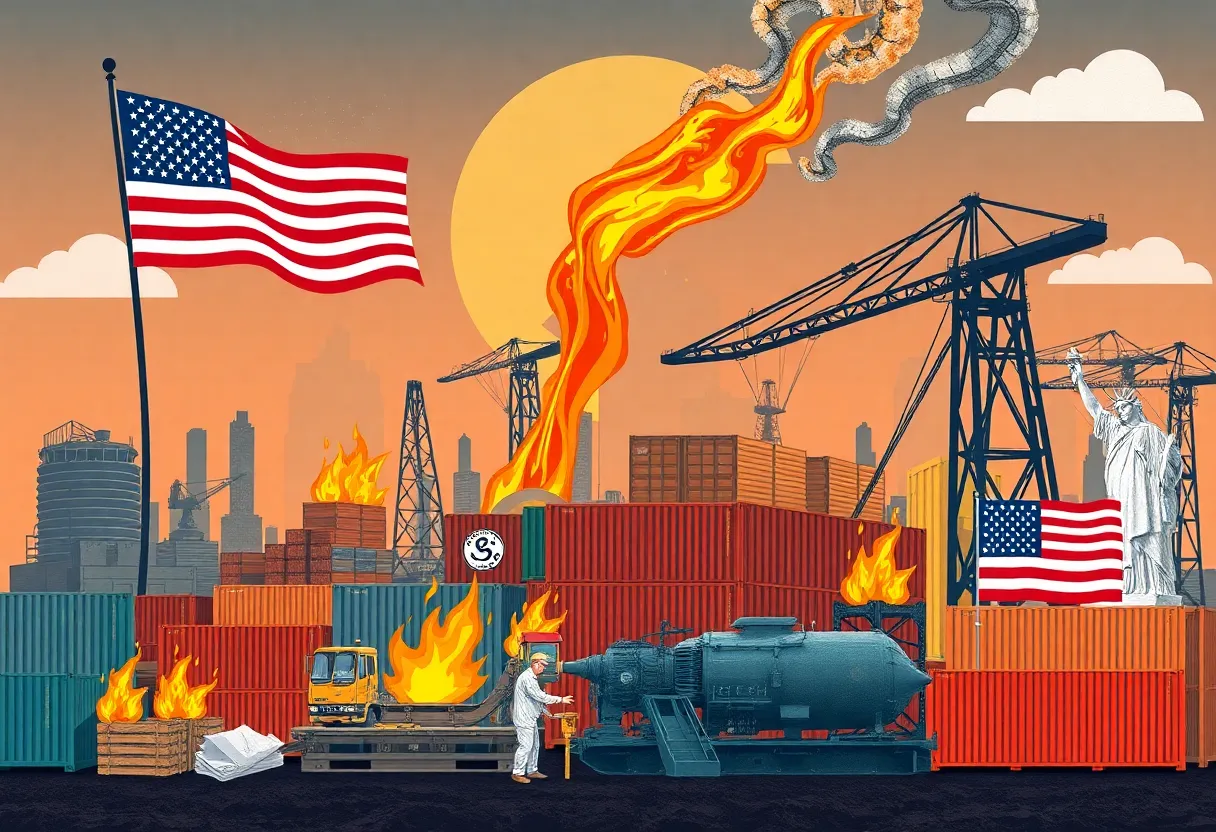

Visual representation illustrating the effects of tariffs on steel and aluminum imports.
President Donald Trump has implemented a sweeping 25% tariff on all steel and aluminum imports into the U.S., affecting previously exempt countries. This move has sparked swift backlash from the European Union and Canada, with warnings of retaliatory tariffs worth billions. While the intention is to boost domestic production, critics worry about rising consumer prices and overall economic impact. Experts predict the tariffs could disrupt interconnected supply chains and lead to a slower growth forecast for the U.S. economy, raising concerns among industries reliant on these materials.
In a move that’s making waves across the globe, President Donald Trump has rolled out a hefty 25% tariff on all steel and aluminum imports into the United States. This decision also means that countries which previously enjoyed exemptions from these tariffs are now facing the full brunt of the policy.
As you might imagine, this isn’t sitting well with many of the countries affected. The European Union has quickly announced that they plan to hit back with tariffs on about $28 billion worth of U.S. products. Meanwhile, Canada’s Energy Minister has indicated that while they will retaliate against the tariffs, they don’t plan to escalate the situation further.
In a similar vein, the Prime Minister of Australia has voiced concerns, deeming the tariffs “entirely unjustified.” However, Australia is holding back from imposing any retaliatory duties at this time. It seems there’s a sense of caution among allies, perhaps wishing to avoid a full-blown trade war.
So why is Trump doing this? The goal is straightforward: to boost U.S. domestic steel and aluminum production. While some are cheering this decision, believing it will create jobs and strengthen the nation’s manufacturing base, others are voicing serious concerns.
Critics argue that the tariffs will ultimately lead to soaring prices for U.S. consumers and could hamper economic growth. With major U.S. industries like aerospace, automotive, and construction heavily relying on these metals, the increased costs will likely trickle down to everyday folks. Companies like Linda Tool in Brooklyn are already bracing for this reality, planning on passing those costs directly to consumers.
Experts are weighing in, predicting that while the steel industry might see some benefits from the tariffs, the broader U.S. economy could take a hit. Many economists, including those at Oxford Economics, have already revised their growth forecasts downward, now estimating that the U.S. economy will only grow by around 2% this year.
The implementation of these tariffs has spurred notable reactions in the U.S. and global stock markets, leading to significant sell-offs amid fears of a potential economic downturn. With steel prices surging over 30% and aluminum prices climbing approximately 15% in recent months, industries are bracing for the impact.
These tariffs mark the first unilateral action during Trump’s second term and are similar to measures he took during his first term. However, a key twist is that prior exemptions for certain countries have been revoked, thereby amplifying trade tensions considerably.
The U.S. has traditionally leaned heavily on imports for steel and aluminum, with Canada, Mexico, and Brazil being key suppliers. The worry now is that these tariffs may disrupt tightly interconnected supply chains, especially within the automotive industry stretching across North America.
In the grand scheme of things, the imposition of tariffs reflects Trump’s ongoing tough stance on trade, raising eyebrows among U.S. allies. With the Biden administration previously allowing some of these allies to avoid higher tariffs, the reversal has significant implications not only for trade relations but also for various manufacturing sectors.
In conclusion, while the intention behind these tariffs might resonate with some supporters, the broader economic implications are far-reaching. As the dust settles, it remains to be seen how consumers and industries will adapt to this new landscape of international trade.
News Summary The City of Memphis has appointed John Zeanah as its new Chief of…
News Summary The Working Families Party is actively shaping their endorsement strategy for the NYC…
News Summary The CDC has released updated guidelines stating that children aged 6 months and…
News Summary The Trump administration is implementing new visa policies that affect Chinese student visa…
News Summary Canada is facing devastating early-season wildfires, primarily in Manitoba and Saskatchewan, leading to…
News Summary The Pigeon River has reopened for whitewater rafting, much to the relief of…